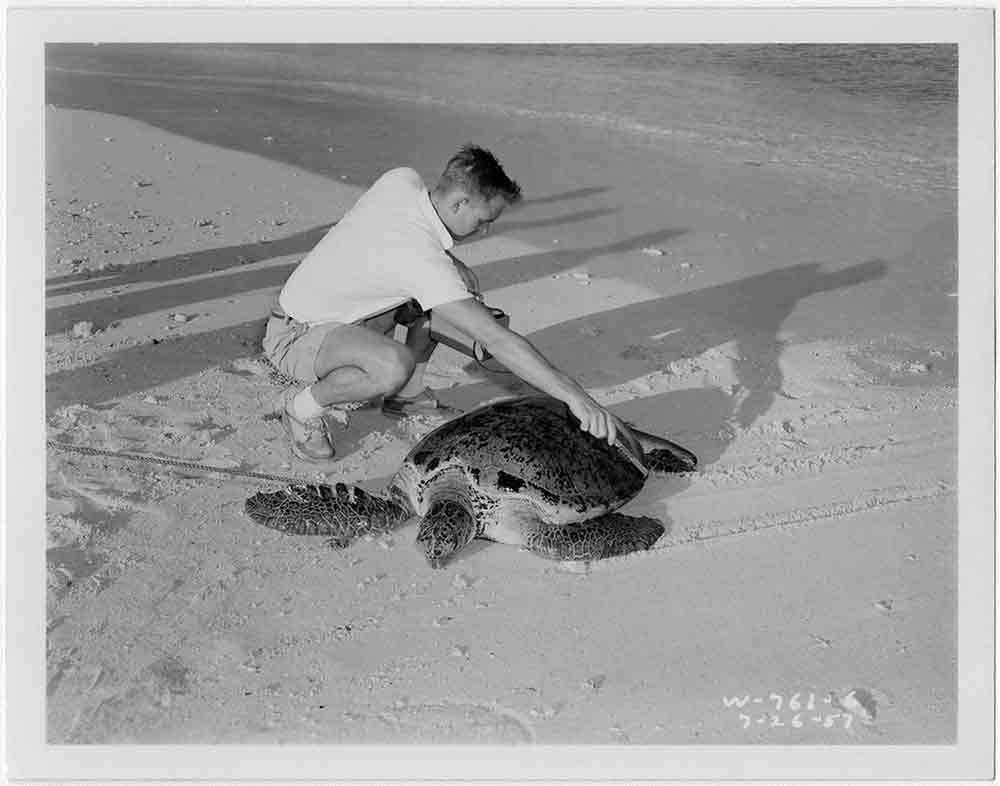In all of the scute samples except that from the control animal, the Sonoran desert tortoise, uranium (235U and 236U) were detected.
Did you know that the shells of turtles record environmental information as they grow? And that uranium, a key ingredient in a nuclear bomb in particular is present in the scutes of certain turtle species exposed to nuclear bomb fallout decades ago.
The researchers wrote in their study that they measured uranium (235U and 236U) in the scute tissue in a range of turtle and tortoise species that are from areas with a known history of nuclear contamination and not only may have survived the immediate effects of nuclear events, but also show they contain a trove of nuclear data long after they were first exposed.

Macro and microscopic visualizations of the scute growth sequence from the eastern box turtle collected from Oak Ridge Reservation in 1962. A) the costal scute showing the location of a subsample selected for scanning electron microscope (SEM)-energy dispersive X-ray spectroscopy (EDS), B) the costal scute showing the visual location of macroscopically identifiable growth rings, C) an SEM backscatter electron image of the scute subsample showing the location of the EDS analysis, and D) an EDS analysis highlighting the presence of silicon (Si) on the scute tissue. Note that silica occurs between areas with homogenous scute growth, suggesting the presence of accumulation during the dormant-hibernation phase of the box turtles annual life cycle.
Five Turtle and Tortoise Species Studied For Nuclear Material Presence
The researchers looked at chelonians from areas that had the potential to accumulate uranium through nuclear fallout or waste. These turtles and tortoises include those from the Nevada National Security Site, the Republic of the Marshall Islands. These chelonians included a green sea turtle (Chelonia mydas), scute that was collected in 1978 from the stomach of a tiger shark caught in the republic of the Marshall Islands.
The second specimen is from a Mohave desert tortoise (Gopherus agassizii) that was collected in 1959 about 150 miles from the former Nevada Test Site, which is now called the Nevada national Security Site. The researchers say 100 atmospheric nuclear weapons were tested here between 1951 and 1962.
The third specimen scute is from a Sonoran desert tortoise (Gopherus morafkai) collected in 1999 at the barry M. Goldwater Air Force Range. This reptile represents the control as no nuclear testes have been conducted at the air force range.
The fourth specimen suture is from a river cooter (Pseudemys concinna) collected in 1985 from the Savanna River Site, a known location of uranium fuel fabrication, target fabrication and spent fuel reprocessing.
The fifth specimen scute was collected from an Eastern box turtle (Terrapene carolina carolina) collected in 1962 from the oak Ridge Reservation in Tennessee, home to several Department of Energy labs and security complexes. Significant Uranium production and processing occurred at Oak Ridge in the 1940s.
In all of the scute samples except that from the control animal, the Sonoran desert tortoise, uranium (235U and 236U) were detected at levels that deviated from natural occurring uranium (235U and 236U) in the respective environments.
“When we consider the legacies of 20th-century nuclear deployment, testing, and production, we must now also consider chelonians and their lived experience in areas where these activities occurred. Our results confirm modeled expectations (43) showing that chelonians should bioaccumulate and retain anthropogenic radionuclides across their shell scute keratin,” the researchers wrote in their research paper. “These animals are thus uniquely positioned to record information about human activities in nuclear landscapes over the long-term. We anticipate that combining analyses of historically collected and modern specimens will significantly expand our environmental monitoring abilities as they relate to ongoing nuclear contamination questions.”
Study About Turtles and Nuclear Waste
The study was put out by researchers with the Los Alamos National Lab, the University of New Mexico, the University of Málaga in Spain, the University of New York, the University of Washington, the Bishop Museum in Hawaii, and NOAA-Southwest Fisheries Science Center, Perot Museum of Nature and Science, University of Kansas, and the University of Utah.
The complete study, “Anthropogenic uranium signatures in turtles, tortoises, and sea turtles from nuclear sites” can be read on the PNAS Nexus website.



